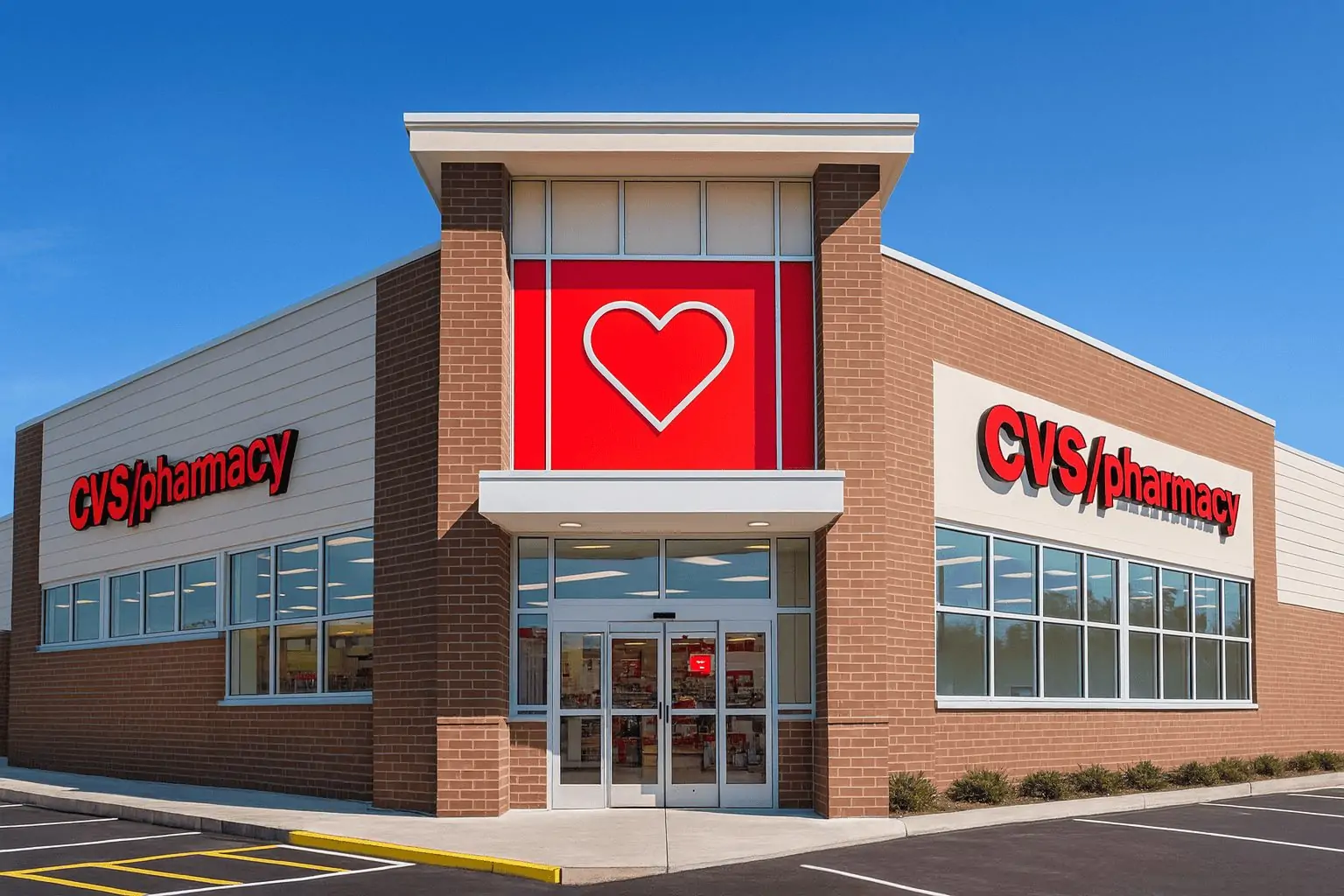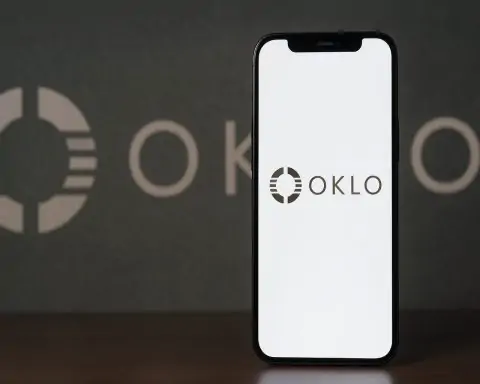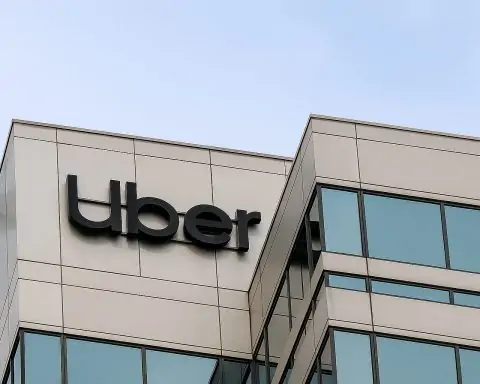CVS Health stock is heading into the new week near the top of its 2025 trading range after a year of sharp gains, a headline‑grabbing goodwill write‑down, and a wave of fresh institutional ownership filings released today, November 23, 2025. At the same time, CVS is tightening up its strategy in primary care, overhauling its pharmacy benefit management (PBM) model, and consolidating leadership at the top of the company.
Below is a detailed, news‑style look at what’s driving CVS Health (NYSE: CVS) right now.
CVS Health stock price snapshot as of November 23, 2025
The U.S. stock market is closed today (Sunday), so the latest full trading data for CVS Health comes from Friday, November 21:
- Last close: around $78.03 per share [1]
- Day range (Friday): roughly $76.23–$78.26 [2]
- 52‑week range: approximately $43.56 (low) to $85.15 (high) [3]
- Market capitalization: about $99 billion [4]
- Dividend: annualized $2.66 per share, for a dividend yield around 3.4–3.5%, with the most recent $0.665 quarterly dividend paid on November 3, 2025. [5]
- Valuation: trailing P/E above 200 (inflated by a large non‑cash impairment) and forward P/E around 11–12 based on 2025 guidance. [6]
Over the past year, CVS shares have climbed roughly 35–37%, and from the 52‑week low near $44 to current levels around $78, the stock has logged a powerful recovery of roughly 75–80%. [7]
In other words: CVS has already enjoyed an “epic comeback” in 2025, but is still trading below its 52‑week high and most analyst target prices.
Today’s news (November 23, 2025): A wave of 13F filings around CVS
The biggest CVS‑specific headlines dated November 23, 2025 come from a cluster of institutional ownership updates, all tied to 2Q 2025 13F filings but published today by MarketBeat and other outlets. Together, they paint a picture of heavy but dynamic institutional interest in CVS Health:
1. Handelsbanken Fonder AB modestly increases its position
- Handelsbanken Fonder AB boosted its CVS stake by 1.5% in Q2.
- It now holds 592,867 shares, adding 8,653 shares during the quarter, with a position valued at about $40.9 million. [8]
- The article reiterates that institutional investors collectively own around 80.66% of CVS Health stock. [9]
2. DNB Asset Management AS adds to CVS
- DNB Asset Management AS increased its CVS holdings by 3.0% in Q2.
- It now owns 227,956 shares, having added 6,621 shares, for a position worth roughly $15.7 million. [10]
The same report highlights that several other big institutions — Vanguard, Dodge & Cox, Geode, Invesco, and T. Rowe Price — also raised their stakes, again reinforcing that more than 80% of CVS shares are in institutional hands. [11]
3. Mediolanum International Funds: big percentage increase
- Mediolanum International Funds Ltd increased its CVS position by an eye‑catching 610.7% in Q2.
- It bought 158,726 additional shares, bringing its total to 184,715 shares valued at about $12.65 million. [12]
4. Entropy Technologies LP initiates a new stake
- Entropy Technologies LP opened a new position in CVS, buying 36,699 shares worth roughly $2.53 million in Q2. [13]
5. Legal & General trims, but remains a top holder
- Legal & General Group Plc reduced its stake by 4.2% in Q2.
- It sold 396,118 shares but still owns 8,983,042 shares, roughly 0.71% of CVS, valued around $619.7 million. [14]
6. Franklin Resources makes a small sale
- Franklin Resources Inc. sold 47,430 CVS shares, cutting its position by only 0.6%.
- It still holds 7,654,613 shares, representing about 0.6% of CVS and roughly $528 million in value. [15]
Bottom line on today’s filings:
- Some long‑time institutional holders (Legal & General, Franklin) have taken modest profits.
- Others (Handelsbanken, DNB, Mediolanum, Entropy) are adding exposure or entering fresh positions.
- Overall institutional ownership remains very high, near 80–81%, implying the stock is still largely in professional hands. [16]
For investors watching flows, this is a mixed but net‑constructive signal: profit‑taking after a big run, but continued broad support from large asset managers.
Q3 2025: Record revenue, large impairment and higher guidance
CVS Health’s most recent earnings report, released on October 29, 2025, is still the key fundamental driver behind today’s valuation.
Strong top‑line and adjusted earnings
For the third quarter of 2025, CVS reported:
- Revenue: about $102.87 billion, up 7.8% year‑over‑year, and ahead of analyst estimates around $98.8–$98.9 billion. [17]
- Adjusted EPS:$1.60, beating consensus expectations of roughly $1.36–$1.37. [18]
- Segment strength: the health‑services segment (including Caremark and Oak Street) saw revenue grow about 11–12% to roughly $49 billion, while pharmacy and consumer wellness revenue climbed roughly 11–12% to the mid‑$20 billions and health‑care benefits (Aetna) revenue grew about 9% to around $36 billion. [19]
A headline‑grabbing $5.7 billion impairment
Despite these strong operational numbers, CVS reported a GAAP net loss of nearly $4 billion in the quarter:
- The company recorded an approximately $5.7 billion goodwill impairment related to its healthcare delivery unit, which includes Oak Street Health primary care clinics. [20]
- That drove diluted GAAP results to a loss of about $3.13 per share, versus a small profit in the prior‑year quarter. [21]
Management framed this impairment as a non‑cash reset of expectations for Oak Street’s growth trajectory rather than a deterioration of the overall business. The company is slowing clinic expansion, closing underperforming locations, and revising its financial assumptions around value‑based care, while stressing that primary care remains “a critical component” of its long‑term strategy. [22]
Guidance: 2025 and 2026
Crucially for the stock:
- CVS raised its full‑year 2025 adjusted EPS guidance to roughly $6.55–$6.65, above prior expectations. [23]
- Management also guided to double‑digit adjusted earnings growth in 2026, even after absorbing the Oak Street impairment and ongoing PBM pricing changes. [24]
- Year‑to‑date, CVS has generated about $7.2 billion in cash flow from operations. [25]
At today’s share price near $78, that guidance implies a roughly 11–12× forward earnings multiple for 2025, which is far lower than the triple‑digit trailing P/E distorted by the goodwill charge. [26]
Strategy shifts: Oak Street, PBM TrueCost and the Omnicare bankruptcy
Oak Street Health: growth tempered, but not abandoned
CVS acquired Oak Street Health in 2023 for about $10.6 billion, and has since expanded it from around 169 clinics to roughly 230. [27]
In 2025, however, Oak Street’s economics have been pressured by higher utilization and cost trends in Medicare and value‑based care. CVS has now:
- Announced plans to close 16 underperforming Oak Street clinics, narrowing its near‑term growth plans. [28]
- Taken the $5.7 billion impairment to reflect lower expected profitability. [29]
Executives emphasize that they still see Oak Street and broader value‑based care as a key strategic pillar, but with a sharper focus on margin discipline and clinic‑level returns.
PBM transformation: TrueCost and CostVantage
On the PBM side, CVS is pushing an overhaul of its reimbursement model:
- The TrueCost model for PBM clients and CostVantage for retail pharmacies are meant to tie pricing more closely to the actual net cost of each drug, improving transparency and reducing spread‑based revenue. [30]
- Management acknowledges these changes will create near‑term headwinds for PBM growth as contracts are re‑priced, but describes TrueCost as the “pricing model of the future” and a way to sustain long‑term relevance and regulatory goodwill. [31]
The PBM business remains huge: CVS’ health‑services segment, which includes Caremark, generated around $49 billion in Q3 revenue and continues to win contracts with high client retention. [32]
Omnicare: a legacy long‑term care unit in Chapter 11
Another important but somewhat separate storyline:
- Omnicare, CVS’ long‑term‑care pharmacy subsidiary, filed for Chapter 11 bankruptcy in September 2025 after a $949 million legal judgment related to allegations of improper dispensing practices. [33]
- The filing lists assets of at least $100 million and liabilities between $1 billion and $10 billion, and is intended to restructure Omnicare’s obligations while maintaining operations. [34]
While Omnicare is only one piece of CVS’ vast portfolio, the bankruptcy underscores the ongoing legal and compliance risks that come with operating at scale in U.S. healthcare.
Leadership and governance: David Joyner to become board chair
Governance is also in the spotlight this month:
- On November 20, 2025, CVS announced that President and CEO David Joyner has been elected Chair of the Board, effective January 1, 2026. [35]
- Current Executive Chair Roger Farah will step down from that role but remain on the board, while Michael Mahoney will continue as Lead Independent Director. [36]
Joyner took over as CEO in October 2024 and has since overseen operational improvements, cost actions, and the 2025 rally in CVS shares. [37]
Combining the CEO and Chair roles will give Joyner even greater influence over strategy and board agendas. For investors, this can be a double‑edged sword: it signals strong confidence in current management but also concentrates power, so board independence and checks from the Lead Independent Director will be important to watch.
PBM tension and GLP‑1 drugs: Eli Lilly drops CVS for its employees
One of the most high‑profile recent headlines involving CVS centers on GLP‑1 weight‑loss drugs:
- On November 12, Reuters reported that Eli Lilly will drop CVS Health’s drug benefit plan for its employees starting in 2026. [38]
- Lilly is moving its staff to PBM Rightway after CVS’ Caremark unit dropped Lilly’s obesity drug Zepbound from preferred formulary status in favor of Novo Nordisk’s rival Wegovy, citing better pricing. [39]
- CVS responded that overall client retention in Caremark remains in the high 90% range and that the move to put Novo’s drug in the preferred position created significant savings for clients. [40]
This dispute illustrates the politically and commercially sensitive environment around GLP‑1 pricing and PBM practices. While the loss of Lilly’s employee plan is not financially catastrophic for CVS, it is a reminder that large manufacturers and PBMs are increasingly willing to reshuffle relationships as they jockey over obesity‑drug economics.
What Wall Street thinks: ratings and price targets
Analyst sentiment around CVS has turned notably more positive in 2025, even as the company navigates impairments and PBM headwinds.
Recent highlights:
- Wells Fargo: maintains an “Overweight” rating and raised its price target to $103 in October, up from $84. [41]
- Goldman Sachs: initiated coverage in mid‑October with a “Buy” rating and a $91 price target. [42]
- Mizuho, Barclays, RBC, UBS, Baird, Cantor Fitzgerald and others have all raised targets over the past few months, with many now in the upper‑80s to low‑100s per share. [43]
- MarketBeat and related filings characterize the consensus rating as “Moderate Buy”, with an average target price around $89–90 per share. [44]
Given Friday’s close near $78, most published targets still imply low‑double‑digit upside plus the dividend — not massive, but notable after 2025’s big run.
Valuation, dividend and risk/reward profile
Valuation snapshot
- Trailing P/E above 200 looks extreme but is distorted by the one‑time, non‑cash impairment booked in Q3. [45]
- On a forward basis, using the 2025 adjusted EPS guidance range of $6.55–$6.65, CVS trades around 11–12× earnings, a discount to the broader U.S. market and many healthcare peers. [46]
- The stock’s PEG ratio near 0.8–0.9 (based on expected growth) and beta below 0.7–0.8 suggest a mix of defensive earnings with moderate growth and reduced volatility versus the wider market. [47]
Income profile
With an annualized dividend of $2.66 and yields in the mid‑3% range, CVS remains attractive to income‑oriented investors:
- Management has continued to support the dividend even while taking impairment charges. [48]
- The payout ratio looks extremely high on GAAP numbers because of the Q3 loss but is far more manageable versus adjusted earnings and cash flow. [49]
Key upside drivers
Investors who are bullish on CVS generally point to:
- A fully integrated model spanning retail pharmacy, PBM, and health insurance (Aetna), offering multiple ways to capture value across the healthcare chain. [50]
- Reaccelerating earnings after a difficult 2023–2024 period, with raised 2025 guidance and targeted double‑digit growth in 2026. [51]
- High institutional ownership and continued net buying by several major funds, as highlighted in today’s filings. [52]
- A solid dividend and a forward P/E that remains reasonable given the company’s scale and potential. [53]
Key risks to watch
Balanced against that, there are meaningful risks:
- Continued pressure on the PBM model, including regulatory scrutiny, client pushback on pricing, and manufacturer retaliation (as seen with Eli Lilly). [54]
- Execution risk in Oak Street Health and broader healthcare‑delivery operations, where costs have been higher than expected and growth plans have been dialed back. [55]
- Legal and compliance risk, illustrated by the Omnicare bankruptcy and related litigation. [56]
- Potential for Medicare Advantage and Medicaid reimbursement changes to pressure Aetna’s margins over time, particularly in markets such as Arizona where churn and policy changes are in focus. [57]
Is CVS stock attractive after its 2025 rally?
As of November 23, 2025, CVS Health sits in an interesting middle ground:
- The stock is no longer a deep bargain after its strong 2025 rebound.
- Yet it still trades at a modest forward multiple, offers a 3%+ dividend, and enjoys broad support from Wall Street analysts and institutional investors. [58]
For growth‑oriented investors, the key question is whether CVS can deliver on its double‑digit 2026 earnings growth plan while keeping PBM and value‑based care headwinds under control. For income‑focused investors, the combination of yield, scale and defensiveness may remain compelling, especially if volatility stays lower than the broader market.
Either way, the new data published today — showing fresh institutional buying alongside some profit‑taking — confirms that CVS Health remains very much in the spotlight for professional money managers.
Disclosure: This article is for informational and news purposes only and does not constitute financial advice, investment recommendation, or an offer to buy or sell any security. Always do your own research or consult a qualified financial advisor before making investment decisions
References
1. www.tradingview.com, 2. finance.yahoo.com, 3. investors.cvshealth.com, 4. www.tradingview.com, 5. www.cvshealth.com, 6. www.financecharts.com, 7. www.tradingview.com, 8. www.marketbeat.com, 9. www.marketbeat.com, 10. www.marketbeat.com, 11. www.marketbeat.com, 12. www.marketbeat.com, 13. www.marketbeat.com, 14. www.marketbeat.com, 15. www.marketbeat.com, 16. www.marketbeat.com, 17. www.tradingview.com, 18. www.tradingview.com, 19. www.fiercehealthcare.com, 20. www.marketwatch.com, 21. www.fiercehealthcare.com, 22. www.fiercehealthcare.com, 23. www.marketwatch.com, 24. www.fiercehealthcare.com, 25. www.fiercehealthcare.com, 26. stockanalysis.com, 27. www.fiercehealthcare.com, 28. www.fiercehealthcare.com, 29. www.fiercehealthcare.com, 30. www.fiercehealthcare.com, 31. www.fiercehealthcare.com, 32. www.fiercehealthcare.com, 33. www.healthcarefinancenews.com, 34. www.healthcarefinancenews.com, 35. www.prnewswire.com, 36. www.prnewswire.com, 37. www.cvshealth.com, 38. www.reuters.com, 39. www.reuters.com, 40. www.reuters.com, 41. www.gurufocus.com, 42. www.gurufocus.com, 43. www.gurufocus.com, 44. www.marketbeat.com, 45. stockanalysis.com, 46. www.marketwatch.com, 47. www.financecharts.com, 48. www.cvshealth.com, 49. www.marketbeat.com, 50. www.gurufocus.com, 51. www.marketwatch.com, 52. www.marketbeat.com, 53. stockanalysis.com, 54. www.reuters.com, 55. www.fiercehealthcare.com, 56. www.healthcarefinancenews.com, 57. www.investing.com, 58. www.marketbeat.com







